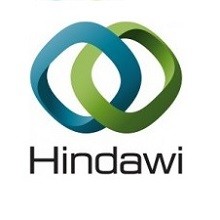
دانلود مقاله رویارویی اینترنت اشیای پزشکی با یادگیری ماشین
خلاصه
معرفی
بررسی ادبیات
نتیجه
در دسترس بودن داده ها
تضاد علاقه
مشارکت نویسندگان
منابع
Abstract
Introduction
Literature Review
Conclusion
Data Availability
Conflicts of Interest
Authors’ Contributions
References
چکیده
در مراقبتهای بهداشتی مرسوم، نظارت بر سوابق بیمار و اطلاعات کاوی برای تشخیص به موقع بیماریهای مزمن تحت شرایط خاص سلامت یک فرآیند حیاتی است. بیماری های مزمن اگر به موقع تشخیص داده نشود ممکن است منجر به مرگ بیمار شود. در سیستمهای پزشکی و مراقبتهای بهداشتی مدرن، اکوسیستمهای مبتنی بر اینترنت Tings (IoT) از حسگرهای مستقل برای تشخیص و ردیابی شرایط پزشکی بیماران و پیشنهاد اقدامات مناسب استفاده میکنند. در این مقاله، یک رویکرد ترکیبی مبتنی بر اینترنت اشیا و یادگیری ماشین (ML) پیشنهاد شده است که دیدگاههای متعددی را برای تشخیص زودهنگام و پایش 6 بیماری مزمن مختلف مانند COVID-19، ذاتالریه، دیابت، بیماری قلبی، تومور مغزی و آلزایمر. نتایج حاصل از چندین مدل ML برای دقت، دقت، یادآوری، امتیاز F1 و سطح زیر منحنی (AUC) به عنوان معیار عملکرد مقایسه میشوند. رویکرد پیشنهادی در محیط مبتنی بر ابر با استفاده از مجموعه دادههای معیار و دنیای واقعی تأیید میشود. تجزیه و تحلیل های آماری روی مجموعه داده ها با استفاده از آزمون های ANOVA نشان می دهد که نتایج دقت طبقه بندی های مختلف به طور قابل توجهی متفاوت است. این به بخش مراقبت های بهداشتی و پزشکان در تشخیص زودهنگام بیماری های مزمن کمک خواهد کرد.
Abstract
In conventional healthcare, real-time monitoring of patient records and information mining for timely diagnosis of chronic diseases under certain health conditions is a crucial process. Chronic diseases, if not diagnosed in time, may result in patients’ death. In modern medical and healthcare systems, Internet of Things (IoT) driven ecosystems use autonomous sensors to sense and track patients’ medical conditions and suggest appropriate actions. In this paper, a novel IoT and machine learning (ML)-based hybrid approach is proposed that considers multiple perspectives for early detection and monitoring of 6 different chronic diseases such as COVID-19, pneumonia, diabetes, heart disease, brain tumor, and Alzheimer’s. The results from multiple ML models are compared for accuracy, precision, recall, F1 score, and area under the curve (AUC) as a performance measure. The proposed approach is validated in the cloud-based environment using benchmark and real-world datasets. The statistical analyses on the datasets using ANOVA tests show that the accuracy results of different classifiers are significantly different. This will help the healthcare sector and doctors in the early diagnosis of chronic diseases.
Introduction
Healthcare has an undeniable impact on the well-being of individuals [1, 2]. Chronic diseases adversely affect the health of human beings. This requires an early and accurate diagnosis which is possible after a physical examination in the hospital. The delayed diagnosis requires patients’ admission to the hospital for treatment which results in increased healthcare cost and duration, and restricted healthcare facilities in rural and remote areas [3]. The traditional diagnosis approaches are human-centered and error-prone, e.g., missed or delayed diagnosis, failure to initiate the follow-up, inaccessible patients’ history, wrong medical prescription, and incomplete information about patient history which may lead to severe consequences to patients’ health [4]. These challenges require the healthcare domain to adopt the latest technological disruptions in the fields of IoT, artificial intelligence (AI), and ML to reduce human error.
The IoT has demonstrated its benefits in connecting medical devices, sensors, and healthcare professionals to provide quality medical services [5] which resulted in extended healthcare services and reduced costs. The medical history of patients collected through these IoT devices also helps in the effective monitoring of patients’ health and early diagnosis by healthcare service providers. These benefits have resulted in the transformation of present healthcare facilities from hospital-centric facilities to patient-centric facilities [6, 7]. The network of medical devices and healthcare professionals created through sensors is also referred to as the Internet of Medical Things (IoMT) which in a healthcare system is called healthcare Internet of Things (HIoT) [8].
Conclusion
Internet has a major impact on our lives, spanning from professional life to social relationships. The IoT has added a new dimension to this process by establishing communication among smart objects, leading to the vision of anytime, anywhere, any media, and anything communication. IoMT is a specialized version of IoT, which specifically deals with the healthcare domain and is playing a vital role in the healthcare sector to provide cost-effective solutions in terms of hospital billing and waiting time. In this paper, a new approach is presented to diagnose 6 different chronic diseases, namely, COVID-19, diabetes, pneumonia, Alzheimer, heart disease, and brain tumor, using machine learning classifiers based on 3 computing layers. The proposed approach is evaluated for each disease using different classifiers using both benchmark and real-world datasets. This also provides efficient and effective health services to the patients by disseminating the networked information to machine learning classifiers.
In the future, the proposed approach will be evaluated with more real-world datasets while considering more chronic diseases. Moreover, efforts will be made to develop cross-disciplinary chronic disease prediction models due to common feature sets.
